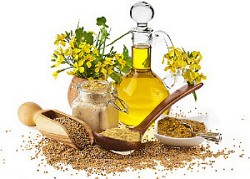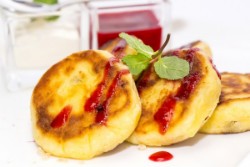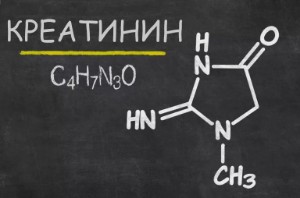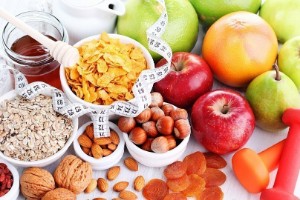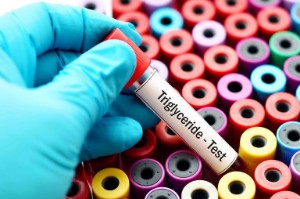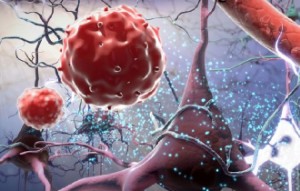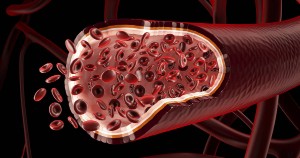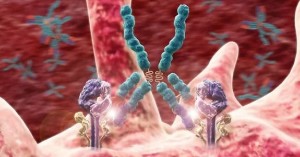Diet rules for elevated bilirubin, as well as lists of useful and harmful products
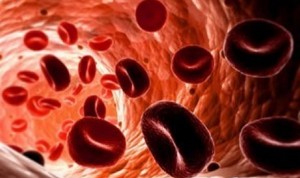 Therapeutic nutrition was added to the list of mandatory therapeutic measures at the end of the first third of the last century. An outstanding scientist, the founder of Russian dietetics and clinical gastroenterology, Manuel Isaakovich Pevsner, proved the insufficiency of medication and physiotherapy alone to get rid of a particular pathology.
Therapeutic nutrition was added to the list of mandatory therapeutic measures at the end of the first third of the last century. An outstanding scientist, the founder of Russian dietetics and clinical gastroenterology, Manuel Isaakovich Pevsner, proved the insufficiency of medication and physiotherapy alone to get rid of a particular pathology.
If treatment is not supported by the necessary adjustments in the patient's diet, the disease will not only not recede, but will also become irreversible.
According to research, the daily diet has a significant effect on the level of bilirubin in the blood.
In the case of elevated bilirubin, following a special diet is absolutely necessary. Without giving up a number of harmful and healthy foods in the diet, it is impossible to achieve a positive result. Which foods should be excluded from the diet, and which ones should be included in it, we will talk about in this article.
Content
What is the danger of elevated bilirubin?
Jaundice, or bilirubinemia, is a functional disorder, the visible sign of which is the yellowing of open mucous membranes (eye whites, tongue), as well as in areas of localization of lymph nodes (armpits, palms).
The reason is the increased content of bilirubin in the blood, which is why it is deposited in other tissues of the body, including in the structure of the skin. Symptoms also manifest themselves in headaches, nausea, fatigue, itching, bitterness in the mouth, heartburn.

Bilirubin is a literal translation from Latin "red bile" (bilis — bile and ruber — red) — the main constituent component of bile in humans and animals. In fact, it is a highly toxic product of the breakdown of building materials (proteins) occurring in the liver, as well as in the cells of the bone marrow, spleen, and lymph nodes. The final decomposition products are excreted from the body with the help of the biliary system.
The total amount of pigment consists of free and bound bilirubin. It is normal for adult women and men this indicator should not exceed 20.5 mmol per liter of blood , while the proportion of direct bilirubin should be no more than 5 mmol.
In case of imbalance, vital organs such as the liver, spleen, and brain are at risk, and ignoring the problem can eventually lead to death. Physiological jaundice in newborns is a natural process that usually does not require medical intervention and takes place after a few days with breastfeeding or feeding with high–quality mixtures.
Basic principles of the diet
The purpose of a special diet with high bilirubin is to relieve the liver as much as possible, stimulate the metabolism of pigments and fats, as well as timely outflow of bile from the body. The basic components of the diet fully correspond to Diet No. 5, which is invariably prescribed to those suffering from liver and gallbladder diseases. Its description is contained in any medical reference book on dietetics.
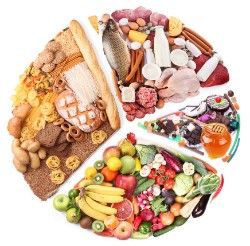 The undoubted advantage of this diet is the wide variety of acceptable foods and the generally universal nature of the diet, which makes it possible to consider it a normal healthy food system.
The undoubted advantage of this diet is the wide variety of acceptable foods and the generally universal nature of the diet, which makes it possible to consider it a normal healthy food system.
With an average calculation, the desired distribution of chemical components should be as follows:
- 100 g of proteins
- 400 g of carbohydrates
- 80-90 g of fat
Special attention should be paid to the liquid in the diet, which should be up to 2.5 liters per day. This is table water without gases and dyes. Compotes of sweet varieties of fruits and berries, decoctions and infusions of herbs, weak tea, green tea are very useful.
The main restrictions are imposed on salt and salt-containing products - they are included in the absolutely forbidden section. The list continues with alcohol, as well as any carbonated drinks. All soda and yeast-containing products are subject to taboo, as well as those that are rich in purines, abundant in refractory fats and heavy fiber.
The main useful filling of the therapeutic diet is everything that actively helps to reduce the level of pigment in the blood and fat metabolism, prevents the liver from degradation, cleans the vessels , reduces the risk of formations involving cholesterol, and also removes bile from the body.
That is why it is so important to include in the daily list of foods rich in fiber, pectins and lipotropic compounds. This refers to almost all vegetables (with the exception of spicy, bitter and containing oxalic acid), fruits (with the exception of sour citrus fruits) and sweet berries. The basis of the diet is carbohydrate, but the presence of a sufficient amount of proteins and polyunsaturated fats in it makes it acceptable to follow for a long period of time.
Another important feature of the diet is fractional meals in small portions . This will support the regular outflow of bile from the body, as well as prevent liver overload that occurs when overeating. Permitted types of heat treatment: cooking, steaming and baking.
Extinguishing is not recommended , as this results in a high concentration of extractive elements harmful to the liver. The temperature of the prepared dishes should always be warm, and in no case cold, so that there is no blockage of the bile ducts.
The average daily calorie intake is about 2500 kcal. The last nice touch in favor of the diet is its relative cheapness. So, if you follow the approximate menu given in our article, weekly expenses will not exceed 1,500 rubles per person.
Classification of food in pathology
All products are conditionally divided into three categories:
- Absolutely prohibited products. They absolutely cannot be eaten either because of the high salt content or irritating effect on the gastrointestinal mucosa, or because of increased stimulation of bile production, as well as saturation with essential oils or refractory fats.
- Neutral. These are products that are allowed under the rules of cooking and in moderation. They are nutritious for the body and at the same time have no effect on the level of bilirubin in the blood.
- Recommended products. They are lowering for the level of bilirubin in the body and should be included in the daily diet of patients.
20 prohibited products
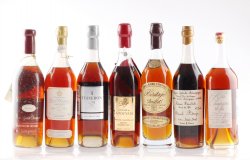
- Alcohol;
- Carbonated drinks;
- Salt and salty foods, marinades, sauerkraut;
- Smoked sprat, sardines, tuna, sprats, herring, salmon roe, shrimp, mussels;
- Mushrooms, especially white ones;
- Yeast products, sweet pastries, fresh bread of the first kind, especially from flour of the first grade;
- Any fatty meat, especially with visible fat layers, liver, brain, canned meat, kidneys, meat of young birds, animals and cooking fats;
- Egg yellow;
- Smoked meats, sausages, sausages, lard;
- Hard, salty, spicy and bitter cheeses;
- Everything containing preservatives and dyes;
- Mustard, hot spices, horseradish, marinades, mayonnaise;
- Sorrel, spinach, radishes and turnips, green onions, garlic;
- Saturated (first) broths;
- Industrial sauces, vinegar;
- Sour fruits, berries and citrus fruits;
- Fried food, including soups (stews are also not recommended);
- Legumes, millet, as well as any cabbage, if the latter is poorly tolerated;
- Fatty dairy products: fatty cottage cheese, sour cream, butter;
- Coffee, cocoa, chocolate, cream ice cream, pastry cream.
16 allowed products
- All vegetables except forbidden;
- Sweet fruits and berries;
- Vegetable oils (linseed oil is especially useful);
- Bran, buckwheat;
- Juices, especially beetroot;
- Low-fat diet meat (beef, veal, rabbit, chicken and turkey);
- Low-fat fish (carp, crucian carp, pike, walleye, cod, navaga, hake);
- Vegetable broths, and occasionally &8212; low-fat meat (second);
- A variety of vegetable and cereal soups;
- Egg whites, in rare cases yolks are allowed in omelets or in soft-boiled eggs; it is better to choose quail eggs;
- Low-fat milk (in the form of soups, milk porridges), low-fat dairy products (kefir, yogurt, acidophilus, fermented baked milk, natural yogurt), low-fat cottage cheese and some cheeses (natural soft, but not salty);
- Most cereals, however, it is necessary to use millet and barley with caution, because of their heaviness for the stomach;
- Bread is recommended to take not the first freshness, baked without salt. It can be replaced with diet bread. From flour products, only unsalted and without baking powder are allowed.
- Dill, parsley, mint are allowed as seasonings;
- Sweet fruit compotes, jelly, jelly, homemade fruit sauces, infusions of herbs and rosehip;
- Of sweets: caramel, marmalade, honey, jam, but all in moderation.
Sample menu for the week
It is not necessary to strictly adhere to the above menu. You can independently replace the proposed dishes with similar ones in their chemical composition. The main thing is to create a balanced diet, with the necessary daily allowance of carbohydrates, proteins, and fats. It is absolutely necessary to exclude prohibited foods from the diet, as well as cooking methods.
The proposed menu is universal, and rather generally healthy in cases of high levels of bile pigment. However, some diseases, the symptom of which is jaundice, require special additional dietary adjustments, and some cases completely prevent the use of products according to the general scheme. Therefore, be sure to consult your doctor before starting any diet.
1. Monday
Breakfast :

- Oatmeal porridge with milk;
- Carrot cutlets with omelet;
- Weak green tea .
Snack:
- Cottage cheese;
- Diet biscuits;
- Apple compote.
Lunch:
- Vegetable soup;
- Steamed beef meatballs;
- Boiled crumbly buckwheat;
- Rosehip infusion.
Afternoon:
- Baked apple
Dinner:
- Chicken souffle;
- Vegetable puree;
- Weak tea with honey
Before going to bed:
- Ryazhenka.
2. Tuesday
Breakfast:
- Semolina porridge with milk;
- Egg white omelet;
- Pear juice.
Snack:
- Steamed sweet dried fruits (except prunes).
Lunch:
- Mashed zucchini, carrot and potato soup;
- Potato casserole with meat;
- Beetroot juice
Afternoon snack:
- Dumplings with diet cottage cheese with strawberry jam.
Dinner:
- Souffle of any allowed fish;
- Vermicelli boiled in vegetable broth;
- Slightly sweet tea.
For the night:
- Kefir with unsalted cookies
3. Wednesday
Breakfast:
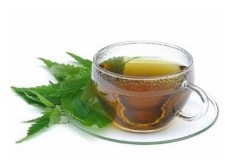
- Soft-boiled quail eggs;
- Grey flour bread with marmalade
- Soft cheese from white varieties (to remove salt, you must first soak the cheese in clean water)
- Infusion of mint or chamomile.
Snack:
- Yeast-free homemade sponge cake or purchased dietary;
- Dried apricot compote.
Lunch:
- Cereal soup with vegetable broth;
- Chicken and vegetable stew;
- Compote.
Afternoon snack:
- Carrot and beet juice.
Dinner:
- Fish fillet with vegetable sauce;
- Boiled rice;
- Fresh salad;
- Pumpkin juice.
Overnight:
- Acidophilus.
4. Thursday
Breakfast:
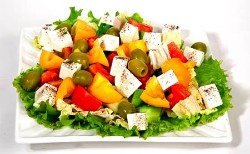
- Rice milk porridge;
- Unsalted cookies with jam;
- Mint tea.
Snack:
- Cottage cheese casserole with honey;
- Beetroot juice.
Lunch:
- Milk noodles;
- Baked rabbit;
- Boiled potatoes;
- Vegetable salad;
- Fruits.
Afternoon snack:
- Baked apples;
- Biscuit.
Dinner:
- Steamed fish cutlets;
- Mashed boiled carrots with zucchini;
- Tea with milk.
Overnight:
- Yogurt.
5. Friday
Breakfast:
- Cheesecakes with sweet berry jam;
- Tea with milk.
Snack:
- Pumpkin curd roll made of yeast–free dough.
Lunch:
- Vegetable soup;
- Chicken souffle;
- Compote.
Afternoon snack:
- Apple and pear juice;
- Yeast-free charlotte.
Dinner:
- Fish and vegetable stew, boiled and baked;
- Boiled rice with vegetable oil;
- Tea with milk.
For the night:
- Acidophilus.
6. Saturday
Breakfast: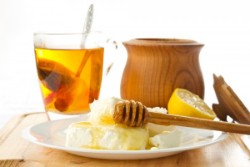
- Oatmeal porridge with milk with the addition of sweet berries or jam;
- Diet cookies;
- Soft white cheese, without salt
- Rosehip infusion.
Snack:
- Low-fat cottage cheese with honey.
Lunch:
- Chicken soup;
- Chicken pilaf according to a dietary recipe;
- Vegetable salad;
- Compote.
Afternoon snack:
- Baked apples;
- Biscuit.
Dinner:
- Potato and meat casserole;
- Natural yogurt;
- Apricot juice.
For the night:
- Acidophilus.
7. Sunday
Breakfast:
- Protein omelet with vegetables
- Buckwheat crumbly porridge
- Tea with milk.
Snack:
- Diet dessert
- Compote.
Lunch:
- Oatmeal soup with vegetables;
- Chicken breasts;
- Potatoes;
- Cucumber and tomato salad;
- Juice.
Afternoon snack:
- Cottage cheese casserole or steamed cheesecakes with jam;
- Peach juice.
Dinner:
- Vegetable lasagna without cheese
- Carrot salad
- Tea.
For the night:
- Kefir.
Serving size – no more than 150 g per dish. Such a diet, with allowed variations, will not only contribute to a visible decrease in bilirubin levels during tests, but also to general improvement and rejuvenation of the body, as well as noticeable weight loss up to 5-8 kg within six months.
A wide range of permitted foods allows you to follow this diet for up to a year or more. In some cases, doctors recommend sticking to this table for up to two years. Its only drawback is that the cooking method soon bores patients, as many have repeatedly complained in the comments. However, excellent test results after such a diet certainly deserve some sacrifices.
Other proven methods
Folk medicine knows ways to get rid of jaundice. The main thing is that before choosing any of them, you need to consult a doctor, take tests to identify the cause of the increased pigment content, as well as concomitant diet therapy.

- Beetroot juice. This tool is capable of enrich the blood with hemoglobin and cleanse the body of toxins, promotes the rapid elimination of bile from the body. You can prepare the juice in the evening. To do this, the peeled and briefly soaked beetroot should be wiped on a plastic grater, fill the mass with granulated sugar (a glass – two tablespoons). In the morning, squeeze out the juice mass properly and take a third of a glass on an empty stomach.
- Corn stigmas. Excellent diuretic and choleretic anti-inflammatory agent. Two tablespoons of corn stigmas are poured with boiling water and infused for taking before bedtime (dose – half a cup).
- Infusions of choleretic herbs. St. John's wort, chamomile, mint have the necessary therapeutic effect. Special pharmacy fees should be used. The recommended method of making a decoction is a water bath. A lightweight option is a targeted herbal tea, which also needs to be purchased at a pharmacy. It is necessary to drink half a glass of infusion twice a day. The results will be available in two to three weeks.
- Birch leaf. The dry mixture is poured with boiling water and brought to readiness in a water bath. Take half a glass before going to bed.
Interesting video
And now we invite you to familiarize yourself with the video:
;
Conclusion
Both the described diet and folk remedies should only be an addition to the medication prescribed by a specialist, if necessary. There are more than 50 reasons for an increase in bilirubin levels, and therefore a very wide range of possible therapeutic measures, which can only be determined by a doctor after special tests for biochemistry, as well as feces and urine.
However, it is quite obvious that if you are among the patients with this disorder, you will not be able to avoid all the above dietary restrictions in order to recover. Be patient, study a variety of recipes for dietary dishes using permitted ingredients, because the diet will have to be followed for many months.
If you follow all the rules and do not stumble on the path of abstinence, you will certainly enjoy not only good tests, but also lose weight and surprise everyone with your rejuvenated appearance. We wish you success and good health!
